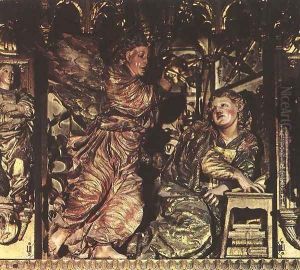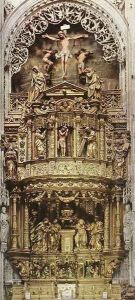Felipe Bigarny Paintings
Felipe Bigarny, also known as Philippe Bigarny or Felipe Vigarny, was a prominent sculptor and woodcarver of the Spanish Renaissance, whose work had a significant influence on the development of sculpture in Spain during the 16th century. Born in the Duchy of Burgundy (present-day France) in 1475, Bigarny moved to Spain early in his career, where he became one of the leading figures in the artistic scene of his time. His background in the Burgundian school, characterized by a detailed and realistic approach to sculpture, played a crucial role in his development as an artist and contributed to the unique style that he would later develop in Spain.
Bigarny's work is particularly noted for its combination of Flemish realism with the emerging Renaissance ideals of beauty and proportion. This synthesis is evident in his elaborate altarpieces, tombs, and religious sculptures, which demonstrate not only his mastery of wood and stone but also his deep understanding of human anatomy and the emotional expressions of his figures. One of his most famous works is the altarpiece for the Chapel of the Condestable in the Cathedral of Burgos, which is considered a masterpiece of Spanish Renaissance sculpture.
Throughout his career, Bigarny traveled extensively across Spain, leaving his mark in cities such as Toledo, Burgos, and Salamanca. His ability to adapt to different regional styles while maintaining his distinctive touch allowed him to work on a variety of commissions, ranging from small, private devotional pieces to grand, public projects. His influence extended beyond his lifetime, as he trained and worked with several other important artists of the period, thus ensuring that his techniques and stylistic approaches would be passed down through generations.
Felipe Bigarny died in 1542 in Toledo, Spain. Despite the passage of centuries, his work continues to be celebrated for its artistic excellence and for the pivotal role it played in the transition of Spanish sculpture from the Gothic tradition to the Renaissance. Through his innovative use of form and detail, Bigarny contributed significantly to the rich tapestry of 16th-century Spanish art, marking him as a key figure in the history of Renaissance sculpture.

